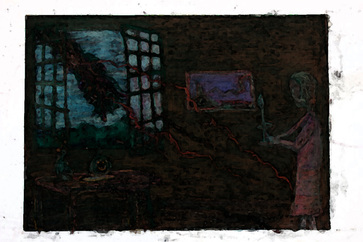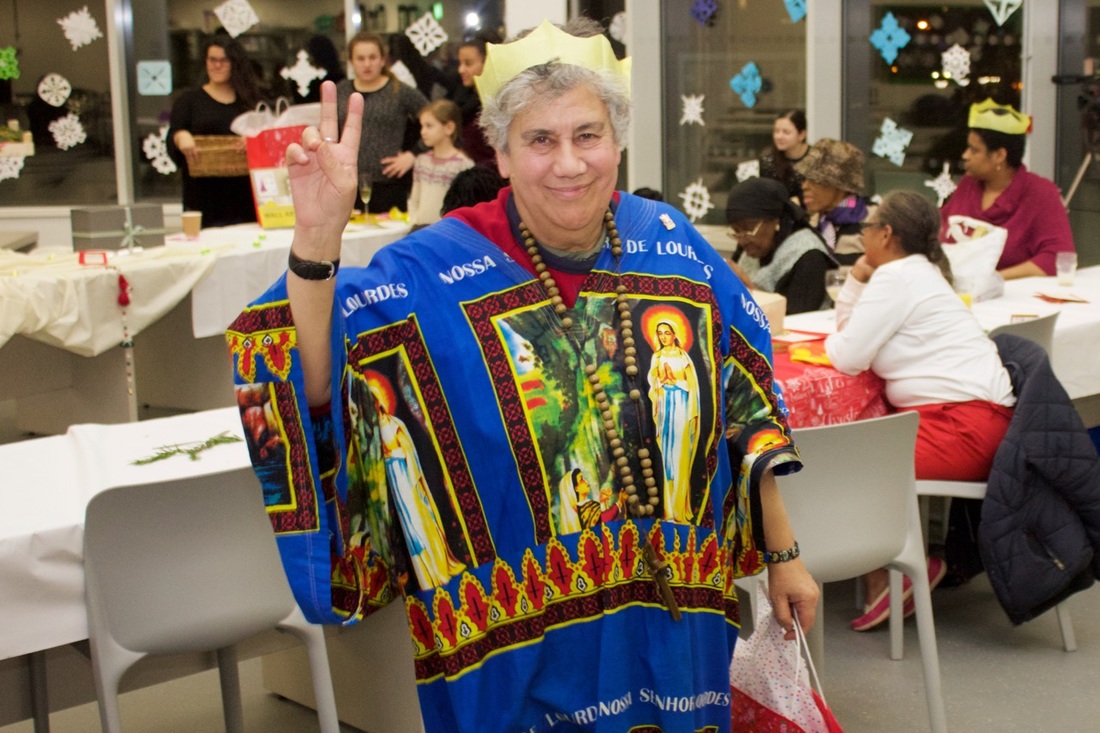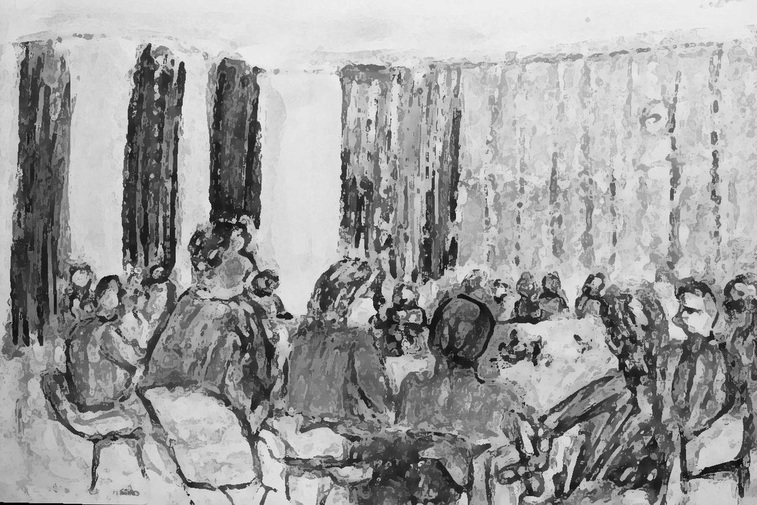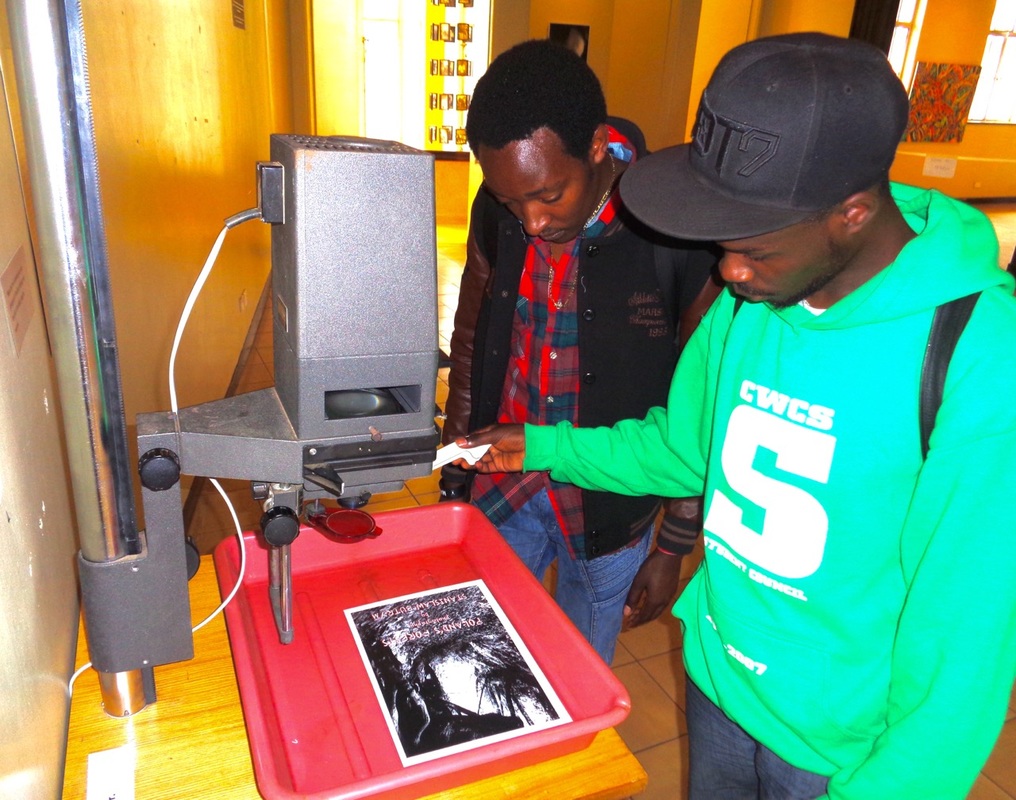|
A film can haunt you in many different ways. In 1978, an excited boy and his overworked parents trek down to the Odeon, Leicester Square. No, not the previous summer-smash Star Wars, but it's more domesticated twin, Close Encounters. Inspired by The Third Kind, he would travel home counting every twinkling light of air traffic as an alien ship passing in the night sky. A fifteen year old is skipping across the ground level section of Westway (A40) and bunking into an X-rated double bill of Terror and Savage Weekend. It's 1981 and the last gasp of the ABC cinema at Edgware Road. Young men are performing a ritual of daring each other to grin through slit throats and dismembered heads. Jump cut. That boy-teen-man is now projecting a 35mm print of Peeping Tom to sleepy film and literature students at the University of Warwick. He is anxiously waiting for cue dots to appear. After effecting a change of reel, seated alone beside a small aperture in the booth, he looks out across the illuminated heads, several bobbing down to new planes of consciousness. The projectionist is transfixed by the imagery on the screen showing a movie camera that has been turned into a deadly weapon. Yes. Those are all my hauntings and they still persist to haunt. This year of slow motion into middle age has lead to a reappraisal of the Italian director, Mario Bava. His richly lensed films were discovered online where there are collective opportunities for the young and old alike to be haunted or re-haunted. This past year has seen the passing of the great Christopher Lee. I kept YouTubing majestic scenes from Bava's The Whip and the Body. In particular, there is a compelling sequence when the heroine is being drawn to the S&M ghost of Lee down a darkened corridor by the constant cracking of a whip. Cinematic magic. As a practising multi-media artist this "haunted" quality only manifests itself in drawings and unpublished or unrealised screenplays. I share a few of the former with you. Although my lips are temporarily sealed on the latter, I do wish to share a few thoughts about a seasonal haunting, Quatermass and the Pit (1967). QM is a great British science-fiction film, bristling with bold ideas and told in a vivid fashion. The electronic sound effects by Tristram Cary, combined with effective direction by Roy Ward Baker and compelling performances, makes this a haunting of hauntings. The film is also part of the rich cultural tapestry of Hammer studios before that fizzled out in the 1970s. An older generation would have experienced the Nigel Kneale's Quatermass stories (of which Pit is the third in the series) when broadcast by the BBC in the 1950s. These are rightly regarded as landmark moments in British television. Enthusiasm aside, I want to talk about the haunting engendered by Quatermass and the Pit. This has a very specific past, present and future. Past tense. I have a ghostly memory which can be precisely dated to Christmas Day, 1973. This turbulent period in British politics would see industrial disputes, three day working weeks, power cuts, and a country grinding to a halt. I can still feel the bones of those darkened and cold spaces. This was the perfect setting for an impressionable seven year old to be spooked on Christmas Day when Quatermass and the Pit was shown as the main late night adult film on BBC2. I seem to recall watching this film alone. Where had my family disappeared to? Had they been swallowed up by the gut of seasonal excess? It matters not, for the film exerted a pulsating grip especially in its claustrophobic evocation of the London underground where a mysterious object is discovered and which unleases atavistic impulses in the human mind. Present tense. As a homage to that 1973 haunting, I decided to photograph a recent transmission of Quatermass which took place on 20tht December 2015. Towards the end of the film, the television underwent a spectrum change with its cathode ray tube. The green light waves completely swamped the reds and blues. I am still trying to interpret the significance of this haunting and I present documentary evidence for your perusal. The TV box on the following Boxing day was as right as rain. Future tense. Quatermass and the Pit is older than Time Lords and Jedi knights. It is begging for a new leash of life and I wonder if the current Hammer Films might be thinking about a re-make. If they do, they will be hard pressed to beat the original TV and film adaptions. Special effects will be a different kettle of fish however. Hopefully a new generation of writers and film makers will discovery the original and use it as source material to create their own narratives. I've just started mapping out a new screenplay called Glass Kill in which medi-EVIL stained glass is discovered in the London underground. Hauntings can come in all manner of tea cups or flying saucers and is not exclusive to the horror genre. If you want to catch a fascinating blast of gallery based hauntings, I point you no further than the sublime Susan Hiller who is showing at the Lisson Gallery until the 9th January. She has described her work as an "archaeological investigation, uncovering something to make a different sense of it." Here you will find an eclectic probing into the real and the unreal, the memory of ghosts and the ghost of memories. Of particular interest is Wild Talents (1997). This is a multi screen video installation that shows paranormal phenomena in a range of American and European horror films and this is juxtaposed with a small monitor showing a documentary about children who have religious visions. Three sets of images are unfolding in the same time and space. Haunting is all about the co-existance of past, present and future. Quatermass and the Pit airs next on the Horror Channel on: Thursday 31st December @ 22:55 Saturday 23rd January @ 22:00 Wednesday 27th January @ 22:00
0 Comments
I've almost concluded my artist residency at Lancaster West estate. There has been a hiatus to the community project work that has consisted of making large scale drawings for a mural and a short film. The regeneration works on Grenfell tower has entered its final phase and we are also in the festive season when even self-employed artists might be afforded a break. However it was a pleasure to be invited back onto the estate by residents and I attended two contrasting events in December. The first was the Christmas meal for seniors. This was held at Aldridge Academy that has recently been built on the former green of the estate. The meal, drinks and raffle went down exceedingly well. This was the first event organised by the new resident association under the guidance of Clare Dewing and Andrea Newton. I had a chance to film residents and chat to them about the estate and how this area of North Kensington has changed. June Toma: "We've lived here for 34 years and slum clearance in the 6os and 70s has changed it a lot. It's a very multi-cultural area which is lovely. A community is what you make. If you have good neighbours and you're friendly with your neighbours and get on with them - that's important. I think as this generation grows up, it will become more of an up-market area. The housing they are building here is quite expensive. I think it pushes out a lot of young families because they cannot afford to live around here any more." Norman Lewis: "I came here in 1985. The estate has had its ups and downs. But I have very nice neighbours and we are very close. We watch each other's backs. The food today is lovely and its nice to have all the community together." Cllr Judith Blakeman: "Today we are reviving the Lancaster West pensioners christmas dinner. We couldn't have one last year because of the building works. It's always the most fantastic event. The estate is becoming a coherent community partly due to the building works and what residents have gone through. This has really brough residents together. It would be a huge shame if this community was destroyed. The big problem is central government policy towards social housing and that's what's worrying us." The second event was a mediation meeting between residents of Grenfell Tower at Lancaster West estate and the Tenant Management Organisation (TMO) that run the estate. Also in attendance were the local councillor and MP. I have been to several meetings and residents are now comfortable with me ether filming or sketching during the proceedings. Let me give some background information. Grenfell Tower has had a £10 million regeneration with new double glazed windows and heating for each flat; the latter has involved a complicated overhaul of the 1970s boiler system. There has been an upgrade to the exterior cladding of the building. In addition to this, new flats are being created and hopefully providing much needed housing at affordable rents. The nursery and boxing club will both be returning to much improved facilities in the building. Despite all this positive regeneration, there has been a bitter dispute between a large number of residents and the TMO; specifically regarding the location for the new boilers in each property. The newly formed Grenfell compact group that represents residents in the tower has also called for an independent investigation into how the TMO have managed the regeneration. One issue that Lady Victoria Borwick, MP, constantly reiterated during the meeting was the pressing need to set aside differences and for all residents to cooperate with the TMO in getting heating and hot water supplies completed in time for Christmas. Over the past year many residents have refused to let contractors commence work in their flats. This has resulted in some of them being threatened with legal action as the TMO has a responsibility to complete the works. In the run up to Christmas the last few properties were having work done to install new boilers and radiators. As an artist working with the TMO on community engagement it has not been an easy residency. I have hopefully overcome initial skepticism about art being a waste of time and money. I have embedded myself very closely with the community in an attempt to reflect all shades of communal life from vibrant tinsel to more sombre monochrome. So let me raise a slightly chipped glass and propose a toast to Lancaster West; to all residents who live on the estate and all the personnel from the TMO who manage the 1200 properties. I look forward to finalising designs of the mural with residents and to work with the TMO in celebrating the 40th anniversary of Lancaster West next year. A though-provoking exhibition about the future of Kenyan forests is currently showing at the National Museum in Nairobi. It has been conceived and curated by the renowned film maker Jacob Barua. Let us listen to him as he guides us on a journey through this exhibition which is also an installation and happening. "Nearly half of this exhibition comprises photography of forests by the late Stan Butrym. He was recognised as one of the first Polish pioneers in the field of championing forests as an source of aesthetic inspiration. He has supremely captured the almost fairytale, eerie and surreal ambience of these Polish forests." "Poland's forests are majestic and mysterious. The last remaining primeval forest in Europe has survived only in Poland and was named a UNESCO World Heritage Site and an incredible 29% of its territory is covered by forests. The oldest documented tree in Poland is 1250 years old. The fauna is equally astounding as it is the only country in Europe with freely roaming bison, lynx, bears, boars, wolves and other animals. Over 500 years ago Polish Kings were among the first in the World to create environmental enclaves, having officially placed many forests under Royal protection." "However the main message of this show is not so much the factual beauty of Polish forests, but an attempt to provoke Kenyans into loving their own forests. As you walk around the display you will encounter numerous suitcases each with tree seedlings. These are Kenyan indigenous species that are on the verge of extinction. I made the selection by closely consulting with top Kenyan botanists to get this right. Kenya is becoming one big Australian forest. We have decided to opt for species from down under. and no longer plants local ones. There's a widespread belief that Australian trees grow faster and give better yields. The scientists I have interacted with say this is a baseless myth. But then how do you tackle a myth once it grows roots?" "There are also books on benches as this is meant to be a "Departures Lounge" on an eco journey. I thought in particular Wangari Maathai and Lech Walesa were relevant to the event. Wangari had her head slashed with a machete during her long fight to save Kenyan and world forests. While on the other hand we have an electrician who helped topple a system that didn't care at all for the environment. Here I am showing that whatever station you have in life, you can make a difference to humanity as a single determined individual. " "Even audio performances are used as impromptu happenings to enhance the entire event. I literally grab visitors with whatever skills or talents they have and invite them to do something that becomes intrinsically a part of the whole. The kids from the Jirani Children's Choir were truly great. They come from a slum called Dandora in Nairobi which has the largest garbage dump in the city and children forage through it. Such kids as those in the choir have been literally plucked out of this humongous festering un-environmental mountain of poverty, through the sheer angelic nature of their voices. Out of the largest garbage mountain in Kenya comes inspiration, beauty and promise." "The show has also turned out to be a hit with ordinary Kenyans. The Museum is one of the few places working class Kenyans can afford to take their entire family on an outing. Youngsters have given me inspiration. Many have told me or written in the visitor's book that they will now start planting indigenous trees and also tell their teachers that they should do so." "Our tree species are on a grand Safari; out into the realm of History." Photography and text kindly reproduced by Jacob Barua. The exhibition runs from the 21st November 2015 to the 21st December 2015 at the National Museum of Kenya. |
Categories
All
Archives
May 2024
|


























 RSS Feed
RSS Feed
